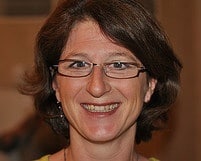This week, I’m honored to introduce you to Debra Askanase. Debra Askanase is the founder and engagement strategist at Community Organizer 2.0, which works with nonprofits and businesses to create engagement strategies that move people to action. She has impressed me with her ability to help nonprofits do competitive analyses of their social media usage. This article on using LinkedIn caught my attention so she let me post it here. Debra can also be found chatting away on twitter at http://twitter.com/askdebra
Think of Linkedin as your virtual professional conference. How do you get the most out of conferences?
- Find the people you want to meet,
- make sure they can find you,
- attend the sessions you’re most interested in, and
- make time to shmooze in the hallway and allow informal conversations to start.
Linkedin isn’t a whole lot different. The online equivalents in Linkedin are: invite people you want to know to connect with you personally, optimize your profile, join and participate in groups that offer value, follow a Linkedin Answers topic areas, and continue some of those interesting group conversations privately.
Start with Your Goals
The key to using any social media platform effectively is to use it to meet your goals. Decide first why you (or your organization) would want to use Linkedin. Reasons might include things like finding collaborators, funders, or colleagues. Once you know why you want to use Linkedin, how you will use Linkedin follows. For example, if you want to use Linkedin to connect with foundations then you might:
- Search for people who work at those foundations
- Join groups that they have joined and participate
- Ask for introductions through mutual Linkedin connections
- Use Linkedin Answers to ask a question about contacting foundations
Identifying your goals will dictate your Linkedin strategy.
Keywords are King
Potential funders, volunteers, members, and organizational entities will search for whom they want to know on Linkedin by keyword. Identify a combination of 10 keywords and keyword phrases that best describe you. Identify 10 others that best describe the organization. Integrate these keywords and keyword phrases into your personal and company profiles so that you can be found.
Optimize Your Personal Profile
One aspect of optimizing your profile is completing it fully. Be sure to include your photo, a summary of who you are, keywords and interests, and a summary of what you’ve accomplished in every position. It’s also important to have at least five recommendations, since people can search Linkedin by number of recommendations.
Optimize the Company Profile
If your organization doesn’t have a company profile, create one on Linkedin. Identify the 10-15 keywords that best describe your organization, and integrate them into the company profile for the profile to be search-ready. If your organization has a blog or Twitter presence, be sure to add those to the company profile to personalize the company.
Utilize the Power of Groups
Real connecting happens within groups. Search for groups related to your profession and industry. I also recommend joining groups your professional colleagues belong to as well. If a group is inactive or not valuable, leave. If it is, spend time within the group answering questions and offering help. When you find yourself in an interesting discussion, invite your colleagues to connect with you personally on Linkedin after the discussion has concluded.
Utilize Linkedin Answers
Linkedin Answers is both a wonderful research tool and means to find new connections. By subscribing to the RSS feed of a certain category of questions (such as Social Entrepreneurship) you can stay up to date on the latest industry discussions, and also answer questions yourself. If your answer is selected as the “best answer,” you win the “best answer” designation, which enhances your professional credibility. Also, questions reach the entire Linkedin community, expanding your reach.
There’s a lot more information in the slide presentation below, Linkedin for Nonprofits.






Very helpful! Thanks, Debra.